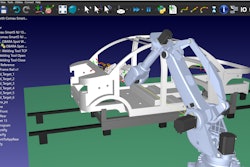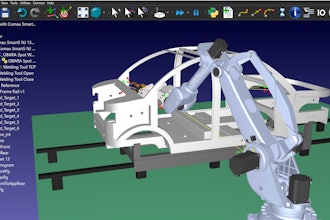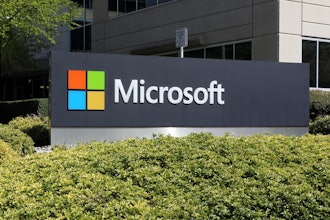
 Ted Miracco
Ted MiraccoSoftware piracy, or the use of software not legitimately paid for and used according to license terms, is a worldwide epidemic. Statistics from the Business Software Alliance show that 42 percent of software installed globally is not properly licensed, resulting in lost revenue of over $63 billion.
While software vendors are the front line victims in this growing epidemic, the manufacturing industry is widely impacted as well. A 2014 study by the National Association of Manufacturers (NAM) found that software piracy adversely affects U.S. manufacturers who rely on software and technology to remain innovative and competitive in the global market. Globalization over the past decade has forced U.S. manufacturers to compete more intensely with emerging market companies that engage in software theft. At the same time, the rising importance of IT and software in manufacturing has increased the cost advantage from software theft. These factors create an unfair competitive playing field for U.S. manufacturers, and as revenue declines, so do jobs and funding for research and development. According to the study, between 2002 and 2012 the manufacturing sector lost $239.9 billion in revenue and over 42,000 jobs due to global piracy. This, in turn, has affected the entire U.S. economy through jobs, revenue and GDP, which was decreased by $69.6 billion.
Software Piracy
What is software piracy? Software is typically sold as a license that gives the purchaser the right to install and use the software with specific rights such as number of computers or users. Cracking is the modification of software to remove or disable copy protection so the software can be used without purchasing a license, or such that it can be installed on multiple computers. Users of pirated software can fall into four general categories: hard-core pirates, soft pirates, victims, and rogue companies.
The hard-core pirates are ‘anarchists’ who believe all software should be free. They can include the hackers who actually break the protection or just users who evade the authorities through the “darknet.” Soft pirates are those who find free or low-cost versions of software online. While they may suspect it’s not legitimate, they rationalize buying it anyway. These versions are dangerous as they are not only illegal, but are also sometimes infected with malware or spyware.
Piracy victims truly do not even realize their software is counterfeit. Sometimes these users are simply not aware of who installed the software, or are just not familiar with terms of the license agreements. Pirated software is sometimes pre-installed or sold to victims by a dishonest distributor or re-seller. Rogue companies are organizations that rely on pirated software as a competitive advantage in the market.
Rogue companies exist in all regions and can be very small start-ups or large multi-national corporations. Many are based in Asia, the Middle East and Eastern Europe, although they can also include companies in the USA and Western Europe, though it is rarer. In all cases, the management team is complicit in the crime, as opposed to an individual employee or group of employees. Rogue companies have a deliberate, premeditated policy to utilize counterfeit software as a competitive advantage in the market and they will fight hard to avoid detection and prosecution in the courts.
This approach is quite prevalent in China, where, according to the BSA, approximately 90 percent of the software in use is counterfeit. So prevalent is the use of pirated software that it is considered a standard way of doing business — and although the government talks about reform, even the governmental bodies talking about reform consistently use pirated software within their own organizations. Chinese piracy is prevalent in small, medium and large commercial companies as well, and these organizations routinely export manufactured products to the U.S. and Europe, hurting local manufacturers and causing job losses and other long-term economic damages.
Piracy Solutions
License management solutions exist that in theory make sure only legally purchased software is deployed on systems. However, the reality is these systems are easily circumvented and cracked licenses are readily available for anything and everything on the market.
Over the past decades, large software vendors have begun to fight back. Traditional approaches may include site audits, search warrants to inspect and confiscate computers with stolen software, and costly litigation for copyright infringement. While effective, these approaches are disruptive, expensive, and typically only used by the largest software vendors like Oracle, Microsoft and SAP. Small and mid-size software companies simply lack the resources, legal expertise and hard evidence required to take this ‘boots on the ground’ approach to compliance.
While many companies employ license management solutions, simply knowing your software has been hacked is only half the battle. You must have hard core proof in order to go after offenders and either persuade them to become compliant or in some cases resort to legal measures.
Success Story
There have been some key successes recently in prosecuting software piracy in manufacturing related industries and recovering lost revenues. In a Louisiana lawsuit, Mercedes Benz sued an auto-parts company that sold more than $17 million of stolen Mercedes Benz diagnostic software to independent repair shops, so they could bypass the Mercedes Benz dealer network, which makes more money on servicing its cars more than it does on sales. Mercedes succeeded in shutting the auto-parts company down and protecting its dealers.
Summary
The problem of software piracy is growing as emerging economies ramp up to compete with the U.S. and Western Europe in the manufacturing industry. But many companies are fighting back by adopting newer software piracy identification technologies that enable them to track illegal users and recover significant revenue.
Statistics show that effective anti-piracy programs typically increase sales by greater than 10 percent. The NAM study estimates that reducing the global software piracy rate by 2.5 percentage points per year for four years would create 27,239 new manufacturing jobs, add $8.7 billion to U.S. GDP, and generate $29.0 billion in revenue to manufacturers.
Ted Miracco is CEO of SmartFlow Compliance Solutions.























